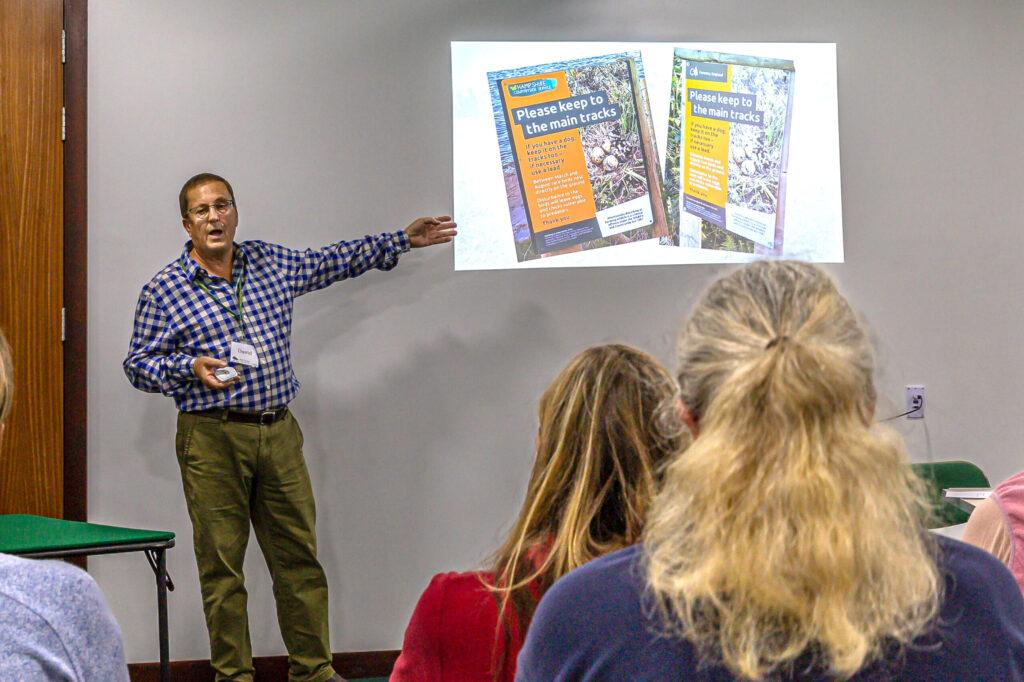
The New Forest is a place of natural beauty and an abundance of wildlife, and is home to around 18,000 dog caregivers. We’re lucky enough to have the New Forest right on our doorstep. However, not everyone is aware of the significant impact dogs may have on the environment.
Sarah, Customer Advisor at Healthy Pet Store, Totton, recently attended a New Forest Dog Owners Group seminar to learn about the current issues related to dogs in the New Forest and the importance of responsible animal care.
Here are the topics Sarah learnt about.
Dog poo
The biggest and most common problem is dog poo being left in the forest, and this can cause a host of issues.
The New Forest has a very large population of foxes who will often supplement their diets with dog poo. This behaviour has led to more foxes surviving during the colder months which has impacted prey populations such as native birds and small mammals.
The majority of the forest’s soil naturally contains low nutrient levels, which is important to maintain the native plant life. However, a dog’s urine and poo concentrated around entrances contain nutrients which may trigger invasive plants such as nettles to flourish. This can be harmful to native plants, which has a knock-on effect on the overall ecosystem.
Dog waste left in bags, either on the ground or in a tree, can also be a big issue. It does not matter if these bags are biodegradable or not ~ they are unsightly and if they’re accidentally ingested, they will pose a threat to the forest’s livestock and wildlife.
Overall, it’s important to pick up your dog’s poo and either carry the waste home or place it in any available bin. Using a poop bag clip holder or special bag attached to yourself or a dog’s lead can provide a convenient and hands-free way to carry it around with you until you’re able to dispose of it.
Keeping dogs under control
Maintaining sufficient control of dogs is important because it ensures the safety of not only your pets, but also other visitors, the forest’s wildlife, and its livestock. It’s also worth remembering that not every person or animal wants to interact with your dog, so be mindful when approaching others.
There is evidence to indicate that while your dog may not directly harm wildlife, their actions can still have an impact. For example, when dogs venture off designated paths, ground-nesting birds can be frightened and may abandon their nests in fear. This makes their eggs and young chicks easy prey for scavengers like crows and foxes.
Chemical flea treatments
Studies are currently being conducted into the risk chemical flea treatments may pose to native insects. It’s recommended that if a dog has chemical spot-on treatments or is wearing a flea collar that they do not swim in natural bodies of water.
Alternatively, there are various non-chemical flea and tick preventatives which do not pose a threat to insect life.
Signage
It is important that all visitors follow the signs around the forest to keep everyone and everything safe. Forestry groups such as the New Forest Dog Owners Group, Wild New Forest and the New Forest National Park are working together to produce easy-to-follow and consistent signage throughout the forest.
The NFDOG hopes that businesses in the New Forest area can play a role in educating individuals about the importance of protecting wildlife and natural beauty. By working together, we can maintain the New Forest’s reputation as a beautiful and highly regarded destination for visitors.
The New Forest dog owners group app is free to download and allows users to:
- Add details about their dogs and report them as lost or stolen (NFDOG members only).
- Emergency guidance for dog first aid.
- Articles to support responsible dog ownership and welfare.
Useful sources
https://www.newforestnpa.gov.uk/things-to-do/walking/dog-walking/professional-dog-walkers-charter/ – New Forest Professional Dog Walkers’
Charter.https://www.newforestnpa.gov.uk/todo/walking/ – Information about the New Forest and conservation efforts as well as resources like the New Forest code